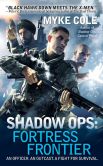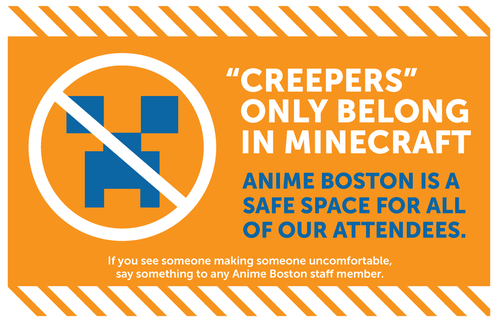Nicole Stark’s Survey of Harassment Policies at Fan Conventions
After I posted my Convention Harassment Policy Starter Kit, I learned about a study Nicole Stark had done about harassment policies at fan conventions. Stark’s article is available on Google Docs, here. I’ve seen a fair amount of discussion on harassment policies and why we do or don’t need to worry about them, but this is the first example I’ve seen of a more rigorous academic survey and discussion of harassment policies. Stark gave me permission to link to her paper, and to discuss some of the highlights.
ETA: Stark is a M.A. student studying sexual harassment. She asked me to share that her email address is NicoleStark@knights.ucf.edu, in case anyone wanted to follow up with her about her work.
From the abstract:
This study uses content analysis to evaluate a sample of 288 fan convention websites. These conventions took place within the United States from March to November 2013. The analysis was used to determine how common sexual harassment policies are and their characteristics. This study examined both frequencies and descriptions of codes of conduct, including promoted and prohibited rules, sanctions, reporting guidelines, and the existence of a sexual harassment or general harassment policy. Less than half of the sample contained any behavioral policy at all. Those behavioral policies that were present were found to be generally informal, unstructured, and devoid of a sexual harassment policy. However, many policies contained rules that could be used in the prevention of sexual harassment. These rules, when made clear and recognizable, may work as effective policy in informal spaces. (Page 2)
Stark opens by discussing an instance of sexual harassment from New York Comic Con, and goes on to note that:
A study on sexual harassment policy in manufacturing firms revealed that an available written policy resulted in a 76 percent reduction in one year’s reports (Moore and Bradley 1997).
In other words, to anyone arguing there’s no need for a sexual harassment policy, there is actual research showing that such a policy can significantly reduce sexual harassment.
I expect some people to protest that a convention isn’t the workplace, and that’s true. There are likely to be some differences in the dynamics and effects of a harassment policy in a convention space vs. a workplace. But the underlying premise and conclusion here is pretty straightforward: “We created a written policy on sexual harassment, and sexual harassment decreased significantly.”
I assume most people would like to see sexual harassment at conventions decrease significantly as well. Ergo, creating a written policy seems like a really basic and obvious first step.
Stark’s sample comes from the costume.org website’s list of upcoming conventions. The cons were all from 2013, all located in the U.S., and included media, anime, literary, gaming, comics, relaxicons, and more. So what did she find in her study?
Of the 288 convention websites, 59.38% had no listed policy on their website in regards to behavior or code of conduct. Less than half of all websites (40.62%) had at bare minimum, a behavioral policy explaining acceptable or unacceptable actions while at the convention. These rules ranged from a basic ‘be polite’ to lengthier explanations and examples of what was acceptable and unacceptable behavior. Of the total sample, only 3.47% used the phrase ‘sexual harassment’. However, 13.88% used the word ‘harassment’, not detailing readily available distinctions between harassments, whether sexual, bullying, or annoying otherwise.
Fewer than half of conventions have a posted policy about acceptable behavior, let alone harassment. And the policy is only the starting point; what about instructions on reporting harassment and other unacceptable behavior?
Only 15.27% (44) of the 288 convention websites contained guidelines on reporting. Of the three conventions participating in Project: Women Back Each Other Up, only one employed the use of purple ribbons to indicate female staff members who were prepared to intervene and handle potential sexual harassment. Several policies listed that if there were emergencies, to dial 911 or building security. This left 84.72% (244) of the convention websites devoid of response or guidance to potential victims.
Stark goes on to recommend:
…in evidence of the language and audience in these informal spaces, the following are suggestions for a comprehensive policy at fan conventions. The policies need to be recognizable and readily available (Moore & Bradley 1997), properly enforced, include and define sanctions, train employees for prevention and response, (Harmus & Niblock 2000), detail complaint procedure (Fowler 1996), and define sexual harassment in terms that the audience understands. (Emphasis added)
I have very little to add beyond Yes. That.
I recommend anyone interested in the ongoing conversation about sexual harassment in fandom read the full study. And my thanks to Nicole Stark for letting me link to and chat about her research here.







 I reviewed
I reviewed 


 When I was at Windycon a few weeks back, the convention was kind enough to give me a copy of
When I was at Windycon a few weeks back, the convention was kind enough to give me a copy of